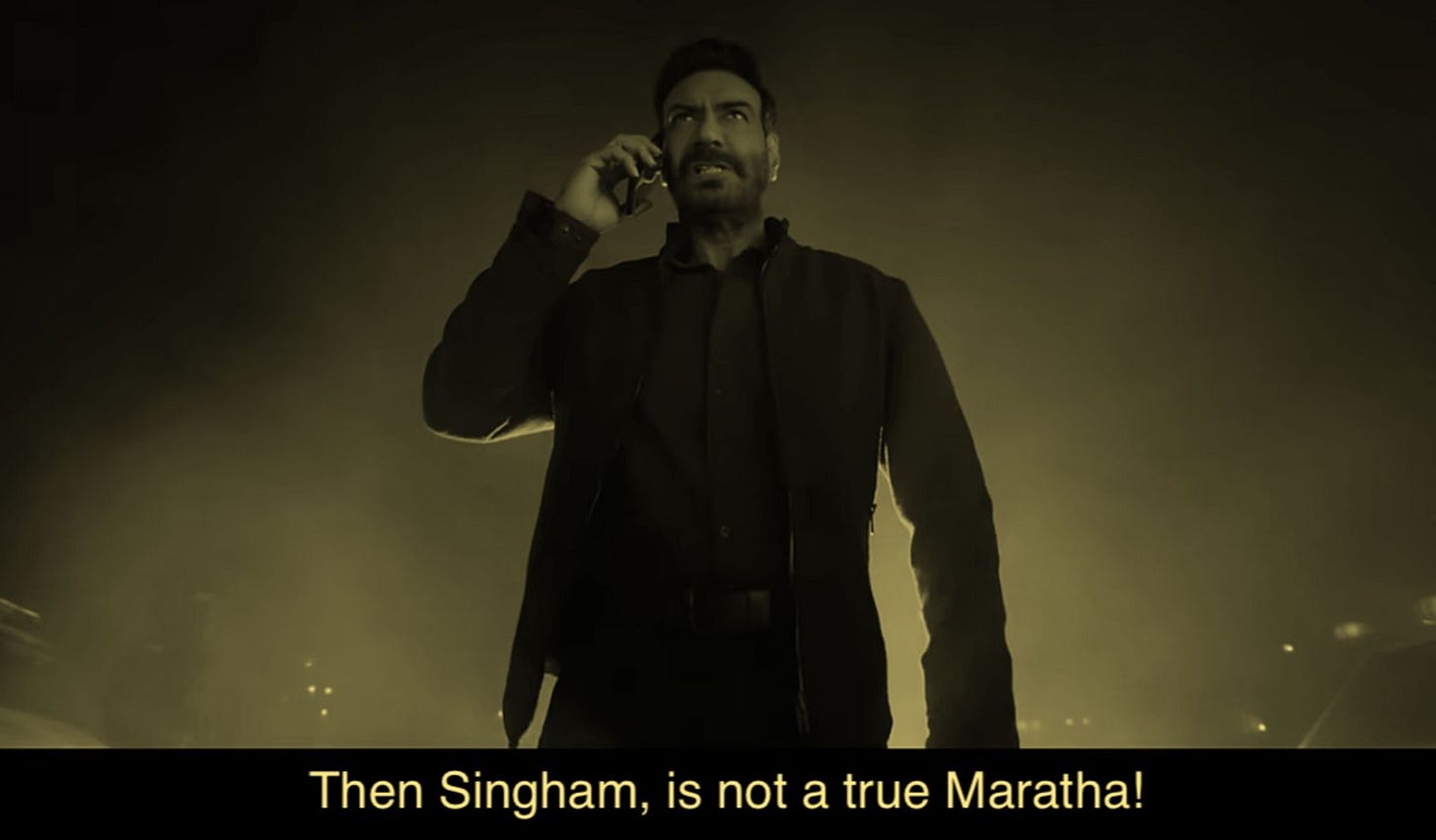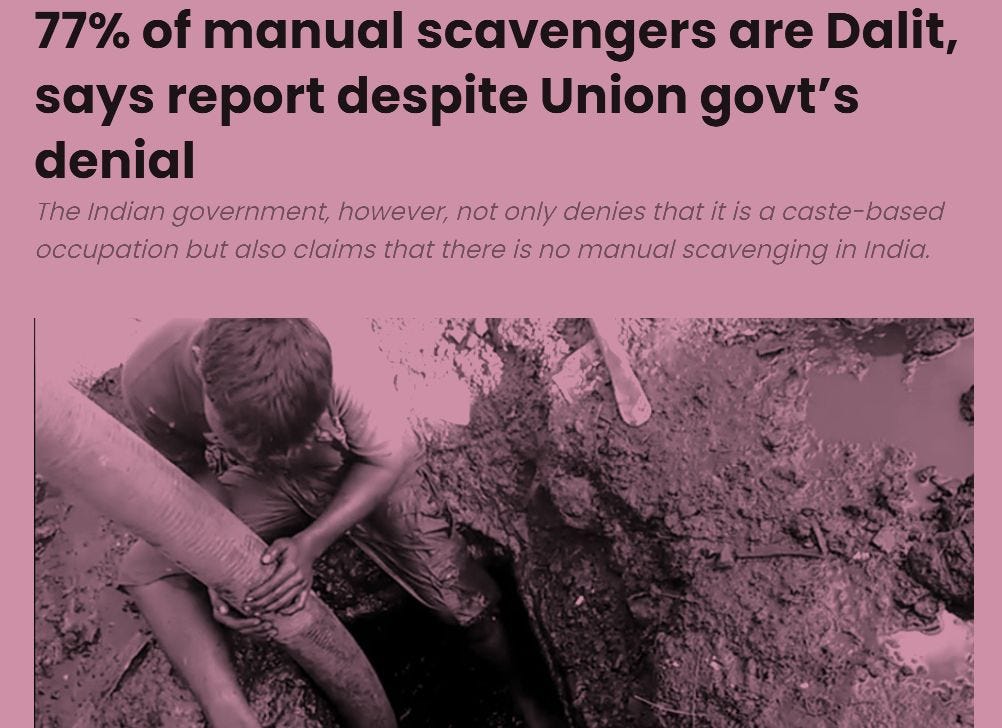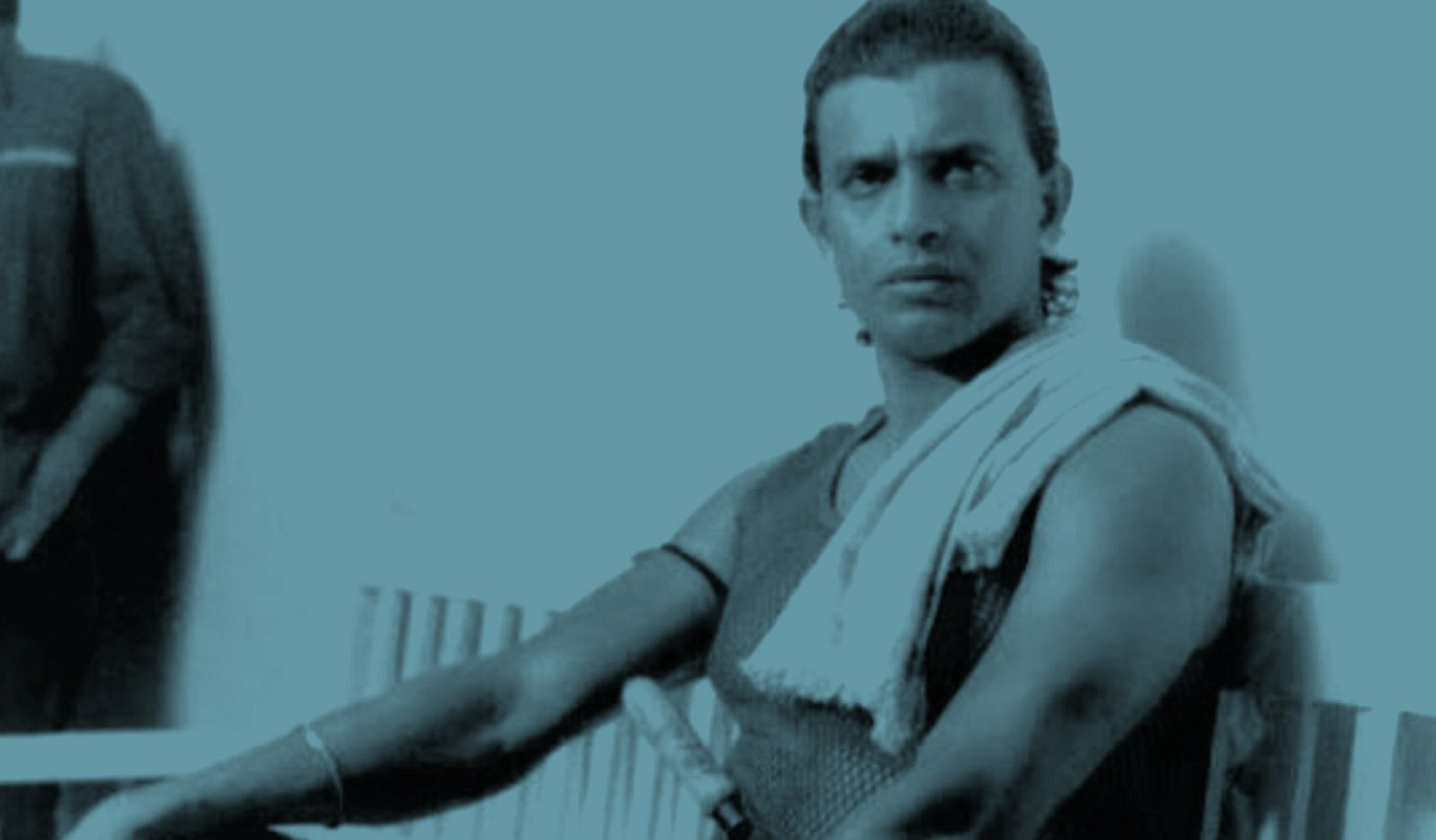Bollywood is casteist as hell and it's about time we had that conversation Pt. 1
How the film industry's blatant obsession with religion paves way for openly casteist notions
Privilege disclosure: I’m a Konkani-speaking cisgender savarna girl residing in the Mumbai Metropolitan Region of Maharashtra in India. I have never experienced casteism in my entire life, so I may not be the best person to write this article, but as a person with unfortunate undeserved caste privilege, I do feel the need to critique this jarring system, using whatever resources I do have the access to. I also don’t use my birth surname here, for the record. It’s still abolish brahminism at the end of the day.
On a side note, shoutout to ; I wouldn’t have been able to write the section on Dravidian representation without her help.
Is it just me or has India’s obsession with the Hindu epic Ramayana only increased tenfold ever since the bludgeoning inception of the widely covered Ayodhya Ram Mandir? Saffron flags crying Jai Shree Ram sit atop swanky mansions and crumbling settlements alike. While at a cursory glance, the slogan (translating to “Victory to Lord Rama”) comes off as a religious greeting, its connotation runs way deeper: it’s a fascist battle cry to ward off religious minorities- especially Muslims- and establish an abominable Hindu ethno-state.
The destruction of the coveted Babri Masjid in Ayodhya in 19921 (carried out by right-wing Hindu supremacist groups like Vishwa Hindu Parishad), and the subsequent 2024 installation of the Ram Mandir in its place has ushered in a particularly peculiar era of Bollywood, the Hindi film industry. Prior to the Ram Mandir inauguration, there was Om Raut’s Adipurush (2023), a Ramayana adaptation which was met with appalling scores from consumers and critics alike. A potential Ramayana movie, directed by Nitesh Tiwari, is reported to release in 2025. And what we have with us for now, in this year, is the newest installment of Rohit Shetty’s idiosyncratic car-flying physics-defying cop universe: Singham Again, which appears to take considerable inspiration from the same epic.
Art is subjective, but I doubt Shetty’s latest cashgrab-esque venture into his own copaganda cesspool can even remotely qualify as that. Its trailer has received rather polarising opinions. From being called out for the piercing five minute-long runtime- a short film in itself, as described by some-, to being openly criticised for its painfully obvious cameogasm tactic to climbing the trending charts every day since its release, the Singham Again trailer has successfully proved that perhaps all publicity- no matter how critical and harrowing- is good publicity. But here’s what stood out to me, specifically: At one point, Bajirao Singham (Ajay Devgn), the titular “heroic” cop, proclaims rhetorically, that if he fails to rescue his abducted wife, Avni (Kareena Kapoor Khan), then he is not a “true Maratha.”
The trailer draws parallels between Ramayana and the movie itself, assigning the characters of Rama, Lakshmana, Sita, Hanuman, and Jatayu, to the characters essayed by Ajay Devgn, Tiger Shroff, Kareena Kapoor Khan, Ranveer Singh, and Akshay Kumar, respectively. The fact that almost all of these characters being cops is bad enough- we really are at a point in time where we equate cops with “gods”-, but Bollywood’s increasing obsession with religion and communal politics has only added fuel to the fire of its excruciating history of endorsing casteism.
I feel like I cannot talk sufficiently about this topic without having a baseline discussion on the issue of the caste system first. The caste system is a hierarchical social stratification, a part-and-parcel of Hinduism, the dominant religion in India. It is an oppressive and exploitative system, manifested from the varna system (which later turned into the jaati system), and operates largely on the basis of societal hierarchy. The four castes that form the varna system are Brahmins (priests), Kshatriyas (warriors), Vaishyas (traders), and Shudras (peasants). These four castes are collectively known as the savarnas- the ones that form the varna system. There does exist a fifth category outside the varna system too- the Avarnas- consisting of dalits, bahujans and the Adivasis (tribals). The avarnas are conformed to “menial” occupations, like manual scavenging and toilet cleaning.
I think I have got my point across: the caste system is a blight on this planet and should die. This thought becomes a little difficult to carry out in real-time, especially when you live in a country where more than half of the population still ardently follows the “religion” that is rooted in this exploitative system. Moreover, the surnames of pretty much every Hindu citizen still carry a mark of their occupational caste– it is very easy to tell if someone is a Brahmin or a Shudra or a Dalit from their last name. Ultimately, no matter how much we gaslight ourselves into thinking that the caste system was a thing of the past and “no longer exists,” we would be eventually lying to ourselves and tricking ourselves into a never-ending delusion, because the truth is, caste is still very much a reality of modern-day India.23
Dr. Bhimrao “Babasaheb” Ambedkar, the celebrated Architect of the Indian Constitution, who faced oppression all his life for hailing from the Mahar caste (a Dalit caste) provided two solutions for the complete removal of the caste system, in his groundbreaking speech Annihilation Of Caste: inter-caste marriages and the destruction of religious scriptures, including the Vedas and Puranas.4 He has stressed multiple times how the existence of Hinduism, a religion which is built upon social hierarchy and oppression is the only reason why caste exists, and feared that if it is spread to other parts of the world, the caste problem will graduate from a national issue to a global issue.
Popular actors in mainstream movies making statements such as “I’m a true Maratha,” become little reminders of how we still very evidently carry caste pride in this day and age, thereby straying away from Babasaheb’s dream of an anti-caste India everyday.
You’ll find the quintessential caste pride flaunted in a number of regions in India. In Maharashtra especially, you’ll find the phenomenon everywhere- from the obscurest gullies and mohallas, to the traffic-driven streets of urban centres like Mumbai and Pune- “modern” Indian cities where caste system supposedly does not exist anymore-, from Instagram profiles to visible physical caste markers like the Tilak5, the Janeu6 and the Bhikbali7, predominantly donned by Brahmins. I don’t understand the inherent pride that comes with knowing your ancestors were active oppressors of the marginalised people, but hey, that’s just me.
Ajay Devgn’s character confirming his real Maratha status, in true son-of-the-soil Marathi maanus fashion, got me thinking: has this always been the case with Bollywood? Has Bollywood always represented Marathi-speaking characters in this overly zealous borderline jingoistic fashion, and was my pre-radicalised brain just too naive to understand that? I immediately started thinking of all the Marathi representation I had seen in Bollywood. The ones I could pinpoint right away (Baburao from Hera Pheri, Vijay Dinanath Chauhan from Agneepath, Aarohi Keshav Shirke from Aashiqui 2, Nandu Bhide and Mohini Joshi from Happy New Year) weren’t inherently casteist. Still, the general image of Maharashtra- in pop culture, and otherwise- does certainly reek of jingoism and right-wing ideologies.
This general perception of Maharashtra usually percolates into everyday conversations, inciting negative implicit biases, and of course, stereotyping Marathi characters in popular Hindi cinema. Accordingly, you have police constable characters with recognisable Marathi surnames (Singham, Simmba), or ultra-nationalist Maharashtrian local politicians who hate North Indians from the core (Kaminey).8 I’m not saying this representation is entirely imagined- it is to some extent rooted in reality- but it for sure is dangerously reductionist.
The next question that comes to mind is, why are only the staunch warrior-like Marathas extensively represented on the behalf of the entire state? What about the other communities? The oppressed castes of Maharashtra? Some of the biggest anti-caste movements in India were born in this very state- the Dalit Panthers in Mumbai and the Satyashodhak Samaj in Pune- in fact, the state is also the birthplace of some of the biggest anti-caste revolutionaries of the nation- Dr. Babasaheb Ambedkar, Mahatma Jyotirao Phule, and Savitribai Phule. What about Marathi Muslims? Or Bombay Christians? Or Neo-Buddhists? All of them practise at least one dialect of Marathi- WHERE ARE THEY?
Let’s take another example. What is the average representation of Dravidians in Hindi Cinema? Surely an immensely caricaturised moodboard of a strict vegetarian “no Hindi” anglophone with a funny accent, wearing lungi and janeu, with vibhuti9 on forehead if man, or kanjeevaram saree and gajra if woman, and having their strict vegetarian meals on a banana leaf is what comes to mind. It’s funny, because almost all of these are traits of a typical Tamizh Brahmin, who constitute a very little population of Tamizh Nadu10, a state in southern India. In fact, research shows that 97.65 percent of the state is non-vegetarian.11 Tamizh Nadu does not even rank in the top 10 vegetarian Indian states.12 Still, the redundant vegetarian stereotype is used to depict pretty much anyone hailing from any region down south. Are there no non-Brahmin, non-Hindu communities residing in South India? Of course there are, but which community does Bollywood like to specifically hyperfixate on? Exactly.
What do you think of when you imagine the average Karnataka resident? Probably a tech-savvy IT student in Bangalore hailing from an oppressor caste Kannadiga family, neatly oiled hair, ironed white shirt, glasses and all, in front of a computer all day, harbouring an open hatred for Hindi-speaking North Indians. (side-note: it’s very funny seeing Hindi-speaking oppressor caste folks getting all riled up every time they see a meme about a Karnataka auto driver “imposing” their mother tongue on passengers, as if oppressor caste North Indians haven’t been doing that to Dravidians with Hindi since times immemorial, while also adding an extra dollop of racism and discrimination on the side, but that’s a rant for some other time.)
Honestly, many have called out this inaccurate representation of the South in Hindi Cinema, but it does not end there. Bollywood has also made sure that it only represents the oppressor castes from even the very linguistic community it caters to- Hindi-speaking folks (I use the term Hindi-speaking very vaguely here, because I know there are innumerable dialects spoken in the apparently homogenous Hindi belt. Please do not come at me). Why is the surname of your average Bollywood protagonist always Sharma or Mishra? Why is the surname of every Punjabi Hindu character almost always Khanna, Kapoor, Arora, or Mehra?
Focus on specific castes exists even beyond Hinduism in Hindi cinema. For example, Punjabi Sikhs (also heavily caricaturised) are almost always shown priding on their “Jatt” status. This simply doesn’t hold true just for Punjabi Sikh Bollywood characters, but also independent Punjabi Sikh musicians, who frequently flex about being Jatt in their music. For a religion whose basic tenets were built on the ideas of anti-casteism and anti-communalism, this for sure is ironic and pitiful.
(to be continued in Pt. 2)
I’ve been going back and forth on the idea of a paywall for a minute now. I do not like the concept of a paywall. I’m not judging anyone who has one- I get where you’re coming from and your labour absolutely has to be compensated for- but I feel like that’s just not me. There have been times when I have wanted to read an article only to find out with a dejected face that I need my card and a monetary sacrifice to unlock it. Of course at some point my trajectory of thinking might change as it always has, and I might introduce a paywall, but for now, The Untelevised Revolution is going to remain free for everyone- subscribers and trespassers alike. (Also, putting a paywall with a name like “The Untelevised Revolution”….. yeah.)
THAT BEING SAID, I’m really falling short of money right now and I’m looking at pretty much every option available to help me financially. I know I don’t have a lot of subscribers, but if you did enjoy reading any post of mine at any point and are in the position to help financially, please do so I’d be super grateful to you. To many more.
Forehead mark
Religious thread denoting Brahmin status
Men’s earring worn by Maharashtrian men in the right ear denoting their Brahmin status
I just wanted to add here that the word “Kamina” also has casteist roots, but its usage has become so common in everyday Hindi conversation that no one really acknowledges that it is a casteist slur anymore.
Again a religious marker applied on the forehead
For the record, I know it is spelled “Tamil Nadu” but I have seen a lot of my Tamizh mutuals spelling it as, well, Tamizh, stating that “Tamil” is a bastardisation of the original word, since English doesn’t really have a letter for the unique “zh” sound. I choose to follow that.








Waiting for part 2! Also you get all my money when I have some :"
Interesting choice of what you seek to explain through foot notes. It conveyed everything one ever wanted to know about the intended audience for this post full of old stereotypes about Hindus. Good luck with shitting on your own for a bright future on foreign shores.
P.S: Have to blame Substack algorithm for making this post fall in my timeline.